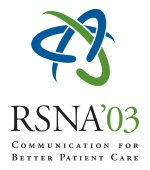Abstract:
HTML
Purpose: To investigate clinical characteristics of developmental intellectual disabilities with unilateral hippocampal infolding retardation (HIR) using magnetic resonance (MR) images.
Methods and Materials: The coronal section image which was perpendicular by Fast-SE method (TR3000 TE 90, slice4mm, non-gap) for front and back direction of hippocampus was scanned. The hippocampal infolding angle (HIA) was defined as the angle between the horizontal midline of the cerebral hemisphere and the straight line connecting the hippocampal sulcus with the inferior horn in the image through the bilateral red nuclei. Based on the bilateral HIAs of 200 patients with developmental intellectual disabilities, the hippocampal infolding development and retardation were estimated. Finally, the MR images and the clinical findings were revealed for 75 patients of unilateral HIR from 0 to 17 years old.
Results: HIA developed to +/- 10 degree until 2 years old. HIA of the illness side was significantly delayed with an average of -40 degrees in comparison with the pair side. Unilateral HIR was recognized 87% by the left hippocampal formation, 80% by male. The unilateral HIR merged 25% electroencephalogram aberration. However the merger of epilepsy was less than 10%. All patients were developmental intellectual disabilities with 80% mental retardation or speech delay, 10% autism and 10% Asperger syndrome.
Conclusion: It was very difficult to identify HIR using computed tomography and the horizontal and sagittal MR images. We consider HIA to be a marker that can be used for the diagnosis of developmental intellectual disabilities. HIR may define as a new disease by HIA measurement.
Questions about this event email: kato@hlsrf.or.jp
Kato MD, T,
Assessment of Clinical Characteristics with Unilateral Hippocampal Infolding Retardation Using MR Imaging. Radiological Society of North America 2003 Scientific Assembly and Annual Meeting, November 30 - December 5, 2003 ,Chicago IL.
http://archive.rsna.org/2003/3103060.html

